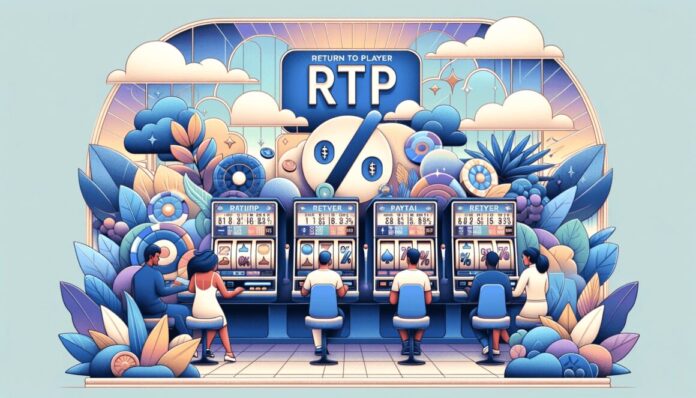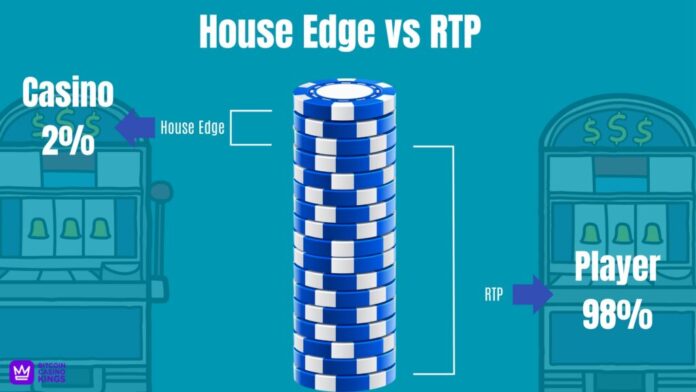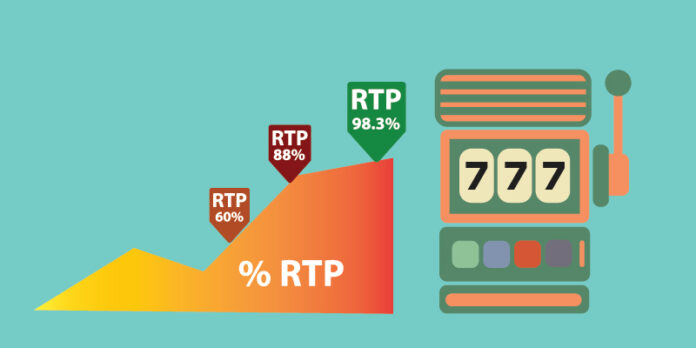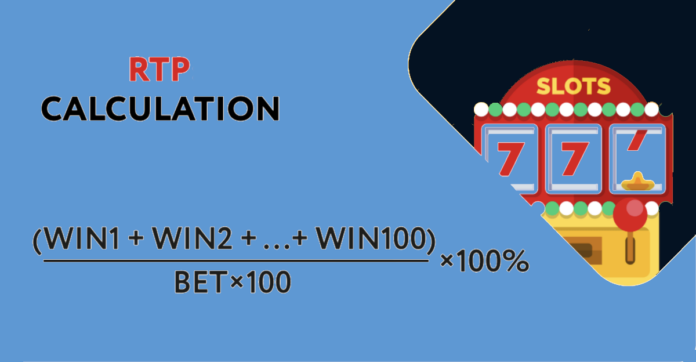Return to Player (RTP) is a pivotal concept in the world of slot machines. It represents the percentage of total wagered money that a slot machine will pay back to players over a certain period. This term is often a point of interest for gamblers as it directly influences their chances of winning. In this 2024 guide, we delve into the intricacies of RTP, unraveling its calculation and significance. Understanding Return to Player is not just about knowing your chances but also about making informed decisions in the gambling world, thus enhancing the gaming experience and potentially increasing the odds of success.
What is RTP?

Return to Player (RTP) is a critical statistic in the gambling industry, specifically for slot machines. Defined as a percentage, RTP represents the long-term expected payback to players from a slot machine. It’s important to note that Return to Player is a theoretical calculation based on the long-term performance of slot games, rather than a prediction for short-term outcomes. This percentage helps players gauge the fairness and potential profitability of a slot machine. Understanding Return to Player is vital for players as it gives an insight into the long-term prospects of their wagers, aiding them in choosing games such as slot Thailand that align with their gambling goals and risk appetite.
How Is Return to Player Calculated?

RTP calculation in slot machines involves a straightforward yet comprehensive formula. It is calculated by dividing the total amount returned to players by the total amount wagered by them. This figure is typically computed over a significant number of game plays to ensure accuracy and reflect the long-term expected payback. Additionally, the role of Random Number Generators (RNGs) is central to determining Return to Player. RNGs ensure that each spin is independent and random, contributing to the fairness and unpredictability of the game. The Return to Player, therefore, is a mathematical representation of the probability, influenced by these random outcomes, over an extended period, offering a reliable indicator for the player’s expected return.
The Significance of Return to Player
RTP holds immense significance for gamblers when selecting slot games. It directly impacts their potential winnings by indicating the average amount of money they can expect to win back from their bets in the long run. A higher RTP means a higher chance of recouping a larger portion of their bets over time, making such games more appealing to players seeking better odds. Understanding Return to Player allows players to make informed decisions on which slots to play, balancing their desire for entertainment with their expectations of winning. It’s not a guarantee of individual session success, but a guide to potential long-term profitability.
RTP vs. House Edge

Comparing Return to Player with the concept of house edge reveals two sides of the same coin. While RTP focuses on the percentage of bet money that players can expect to win back, the house edge represents the percentage of bet money that the casino expects to keep. For instance, a slot machine with a Return to Player of 95% has a house edge of 5%. This means that over time, the casino expects to keep 5% of all money wagered on that machine. Both Return to Player and house edge are crucial for understanding the potential profitability and fairness of a game, and they are inversely related to each other.
Return to Player and Slot Variance
The relationship between Return to Player and slot variance (or volatility) is intricate. While RTP indicates the long-term expected return, variance describes the distribution of wins in the short term. High variance slots offer larger but less frequent wins, whereas low variance slots offer smaller, more frequent wins. Variance affects the gameplay experience, with high variance games appealing to players looking for big wins and willing to endure longer dry spells. Understanding the interplay between Return to Player and variance helps players choose games that match their risk tolerance and playing style.
Finding RTP Information
Locating RTP information for slot games is crucial for informed gambling. Players can find RTP data in the game’s rules or information section, on the casino’s website, or through online reviews and gambling forums. Some jurisdictions require casinos to display this information. Checking Return to Player is a step that should not be overlooked, as it helps players choose games with better long-term prospects. Savvy players always check the Return to Player as part of their game selection process.
RTP Myths and Misconceptions
There are several myths and misconceptions surrounding RTP. A common one is that a game with a high Return to Player will guarantee wins in the short term. However, RTP is a long-term measure and does not apply to individual gaming sessions. Another myth is that casinos can easily alter RTPs to manipulate payouts, but in reality, changing RTP often requires regulatory approval and a physical change in the software. Debunking these myths is essential for a clear understanding of how Return to Player works and its role in slot gaming.
RTP in Online Slots

RTP is a concept that applies to both land-based and online slot games. However, there are nuances in how it is implemented in each setting. Online slots often have higher RTPs compared to their land-based counterparts, mainly due to lower operational costs. The principles governing Return to Player calculation remain consistent, but online platforms offer more transparency and accessibility in finding Return to Player information, allowing players to make better-informed decisions.
Impact of RTP on Bankroll Management
Understanding RTP can significantly influence effective bankroll management. By choosing games with higher RTPs, players can potentially extend their playtime and improve their chances of winning. Practical advice for managing bankroll includes setting a budget, choosing games with appropriate Return to Player and variance for your strategy, and understanding that Return to Player is a long-term measure. Bankroll management is an integral part of responsible gambling, and Return to Player knowledge plays a key role in it.
RTP and Responsible Gambling
RTP contributes to promoting responsible gambling habits. By understanding RTP, players can set realistic expectations and avoid chasing losses under false pretenses. It encourages a more informed and cautious approach to gambling, reminding players of the importance of setting limits and adhering to them. Responsible gambling involves understanding the mechanics of games, including RTP, and using this knowledge to enjoy gambling in a safe, controlled manner.
Conclusion

Understanding how RTP on slots is calculated and its significance is paramount for gamblers. This knowledge not only enhances the gaming experience but also aids in making informed decisions, potentially leading to better outcomes. As we venture into our gambling experiences, let’s remember the importance of RTP, not as a guarantee of wins, but as a guide to help us choose our games wisely and enjoy our gambling journey responsibly.









